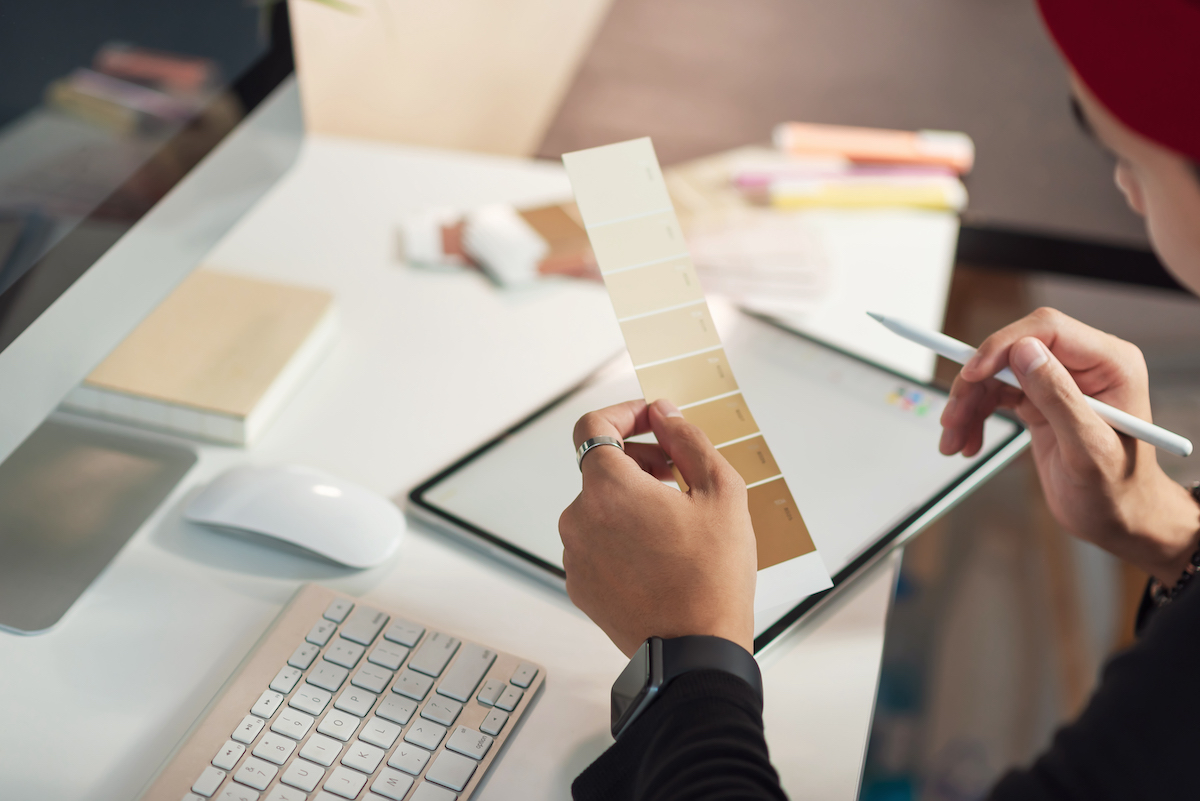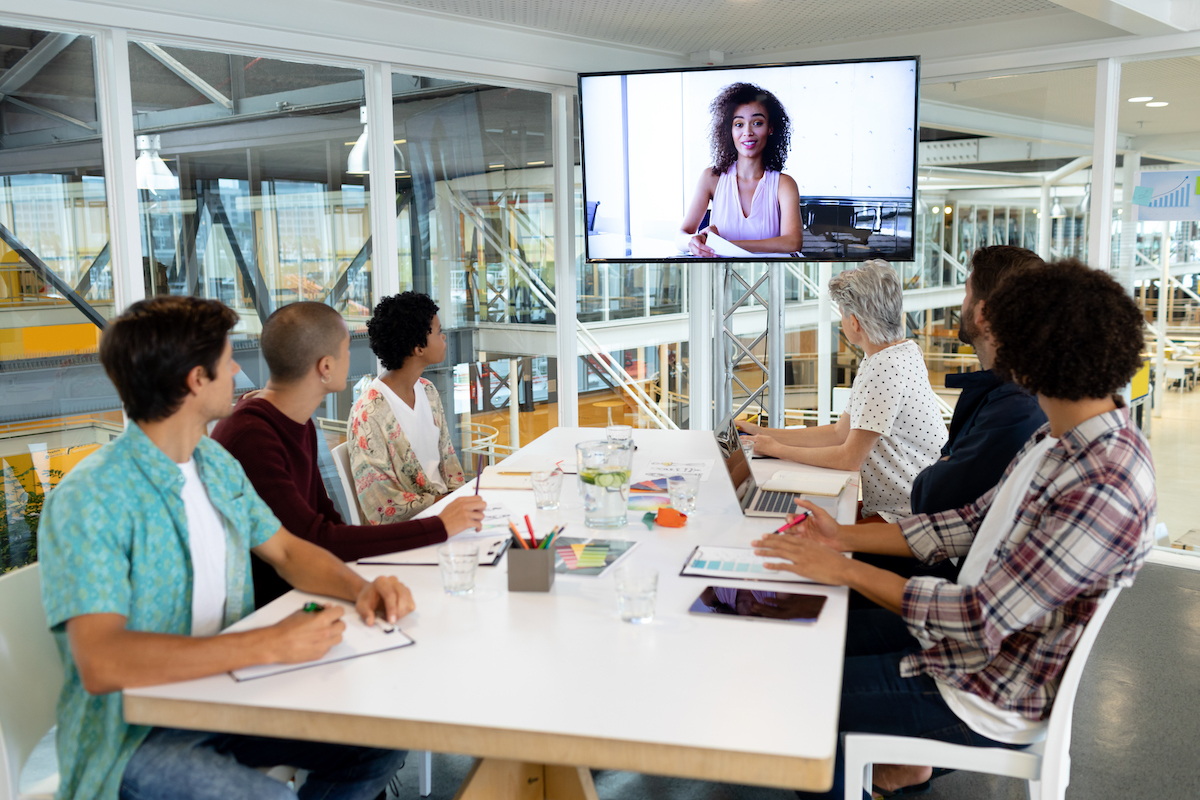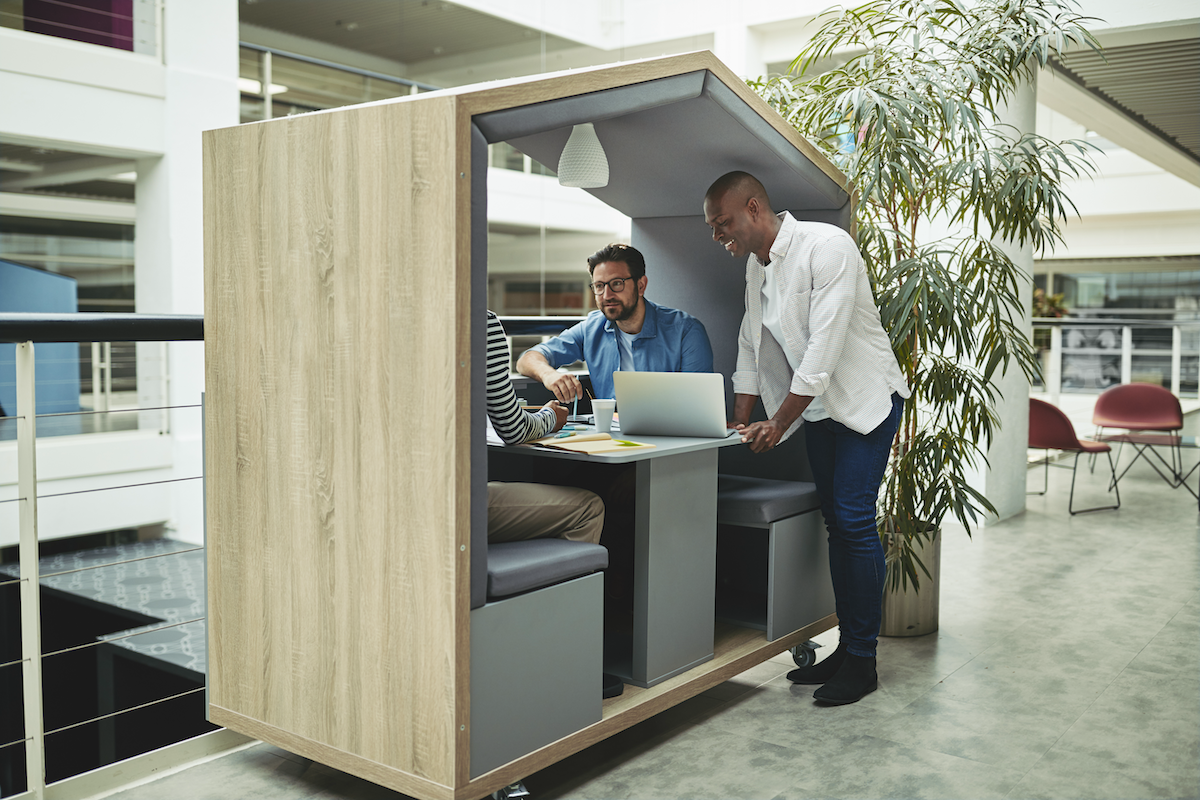
Nearly five years ago, a group of international researchers embarked on a study to determine if social interaction impacted the creative process. Research participants were asked to come up with creative ideas in an outdoor Zen garden. One group was presented the assignment via a robot programmed to have creative expressions while another was explained the assignment through a PowerPoint presentation. The results revealed that the group presented to by the robot developed more creative results than the group instructed by PowerPoint. Simply put, human creativity craves interaction—so much so that in this case, it even flourished when that interaction was simulated.
Flash-forward five years to the COVID-19 pandemic, and we’re faced with a remote workforce required to break away from the social interaction that feeds the creative process. And while many people have embraced the remote work structure as a way to experience a better work-life balance, most members of the architecture, design, and interiors industry are left craving the human interaction that helps spur their creative juices.
So, as we continue to both balance a workforce that remains remote and prepare for a future that holds strong to some of the remote work ideologies even after it’s safe to return to the office, how do we design for a digital workplace that fulfills our need for human interaction?
Acknowledge that the social element of digital has its pros and cons.
Throughout the pandemic, many people turned to social media and videoconferencing to feed their need for human interaction. And while these platforms have their fair time and place, it’s important to recognize the role they—specifically, social media—play in the design process.
Recognizing the stronghold social media has on influencing perspectives, Tom Polucci, firm-wide director of interiors at HOK, explains why we must follow social trends…but also acknowledge the need for the traditional creative process. He explains: “Expressing our thoughts about the positive and negative ways design is being influenced by social media and other digital platforms enables us to demonstrate a strong point of view about design. We want to understand the risks of chasing trends and gravitate toward the value of the rigorous design approach we can only achieve by working together in person.”
Recognize that digital has a place in the creative process.
While on one hand, creativity builds off of human interaction, technology provides much-needed time savings. As we slowly, and perhaps partially, transition back to the physical office, Paul Nemschoff, vice president of global strategy and marketing at Haworth, explains how relying on technology for process-oriented tasks helps free up in-person interactions for creative thinking.
As he explains, “A lot of design work is conducted by two groups—traditional A&D and dealer designers that often must coexist within a project. I believe that the digital side of our interactions allows work to happen more expediently, enabling a rapidly iterative design exploration. By transitioning this process to the digital realm and creating new tools that facilitate more efficient communication between designers and product partners, we’re allowing designers more time to focus on what they do best—the creative process.”
Prepare for the societal shifts driven by our digital world.
Nemschoff believes the way we are interacting with brands as a society has already shifted to the digital in many ways. But that doesn’t mean we don’t still need a sprinkle of physical interaction. As he puts it, “With mobile technology today, many people interact almost exclusively with a brand digitally. Think about all the products you have bought online before you even used, touched, or experienced them in the store. The way people interact with companies will change, but the bulk of what we are buying is still physical and human beings still crave direct human interaction and experiences.”
He elaborates by sharing what he calls his favorite Haworth experience to date: “I was in Milan visiting our Poltrona Frau leathership a few years back, and to this day, I still remember how I was in awe of the rich leather smell that hit me as I entered the building. You simply cannot replicate that experience digitally, and to designers and manufacturers, that sensation is like the lifeline to our creative inspiration.”
To Polucci, this balance is achieved by asking the right questions of the design process to ensure that digital is not sacrificed for personal interaction and vice versa. He elaborates, “We must question our point of view about designing in the digital age to make sure our designers are asking themselves the right questions at the start of each project. Are we, as designers, creating ideas and concepts for a space through a rigorous process that includes an analysis of the site and the needs of the client’s users and customers? Are we challenging each other about why we are making specific aesthetic choices and asking how they fit into the project concept? Are we challenging clients who suggest specific ideas about the aesthetics and products to make sure they support the concept? When you start digitally, these questions—which may have been addressed organically when the meeting is conducted in person—become crucial.”
As we look to a formula to perfectly balance the digital and physical needs of our transitional workforce, perhaps we are best served by acknowledging that there is no exact science and that respect for basic human interaction, whether that be technology enabled or in person, remains crucial.
Polucci puts it best: “Flexibility will be our best friend as we move forward. We have all figured out how to work from home, stay connected, and collaborate. I hope in the near future we have the opportunity to work anywhere yet still connect physically together at the workplace. I also hope we do a better job taking care of each other. We can focus more on the well-being of friends, family, colleagues, and the human condition.”
This article originally was published in Bellow Press and was reposted here with permissions.
Amanda Schneider is President of ThinkLab, the research division of SANDOW. At ThinkLab, we combine SANDOW Media’s incredible reach to the architecture and design community through brands like Interior Design Media, Metropolis, and Material Bank with proven market research techniques to uncover relevant trends and opportunities that connect back to brand and business goals in a thought-provoking, creative, and actionable way. Join in to know what’s next at thinklab.design/join-in.

